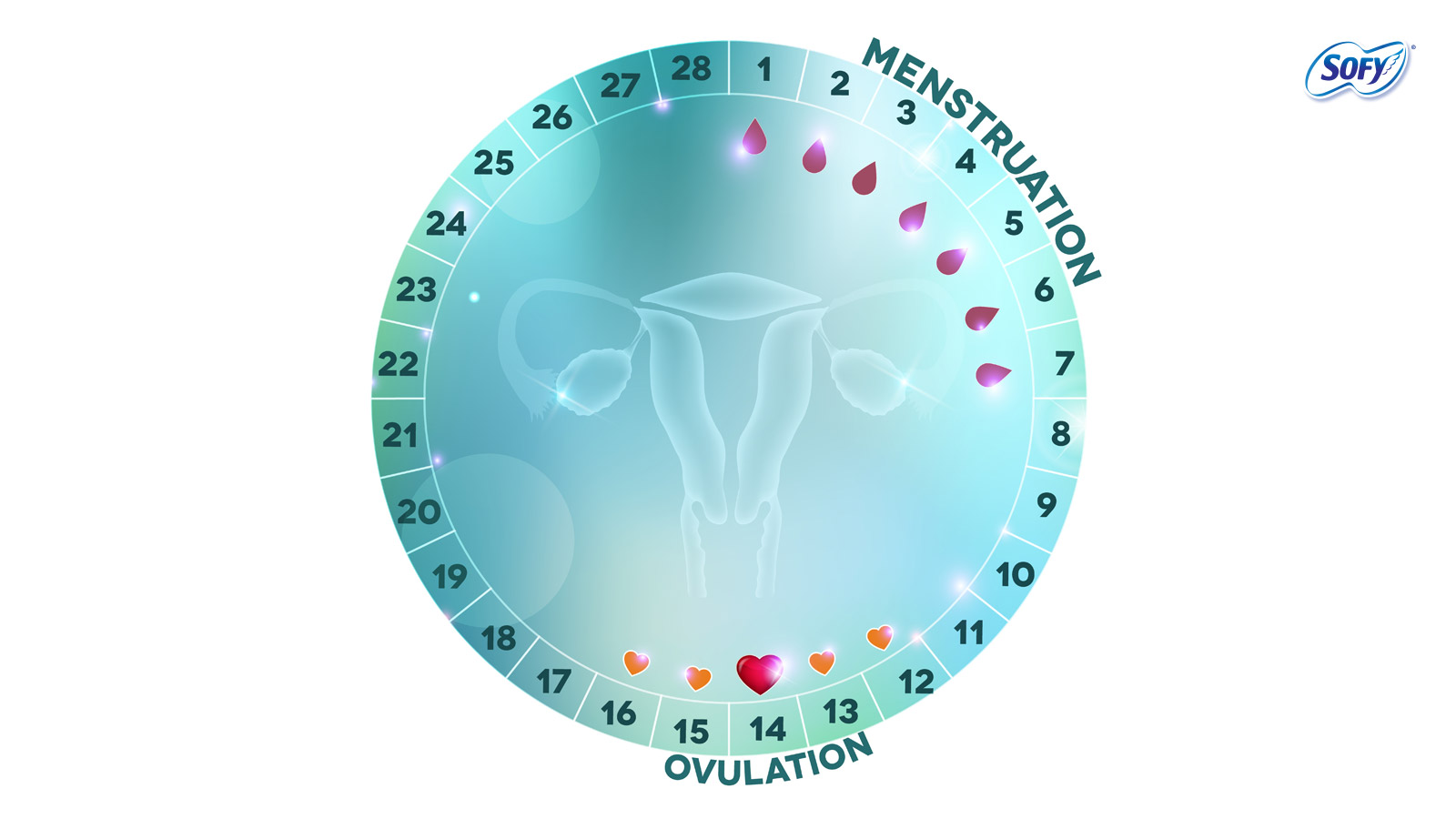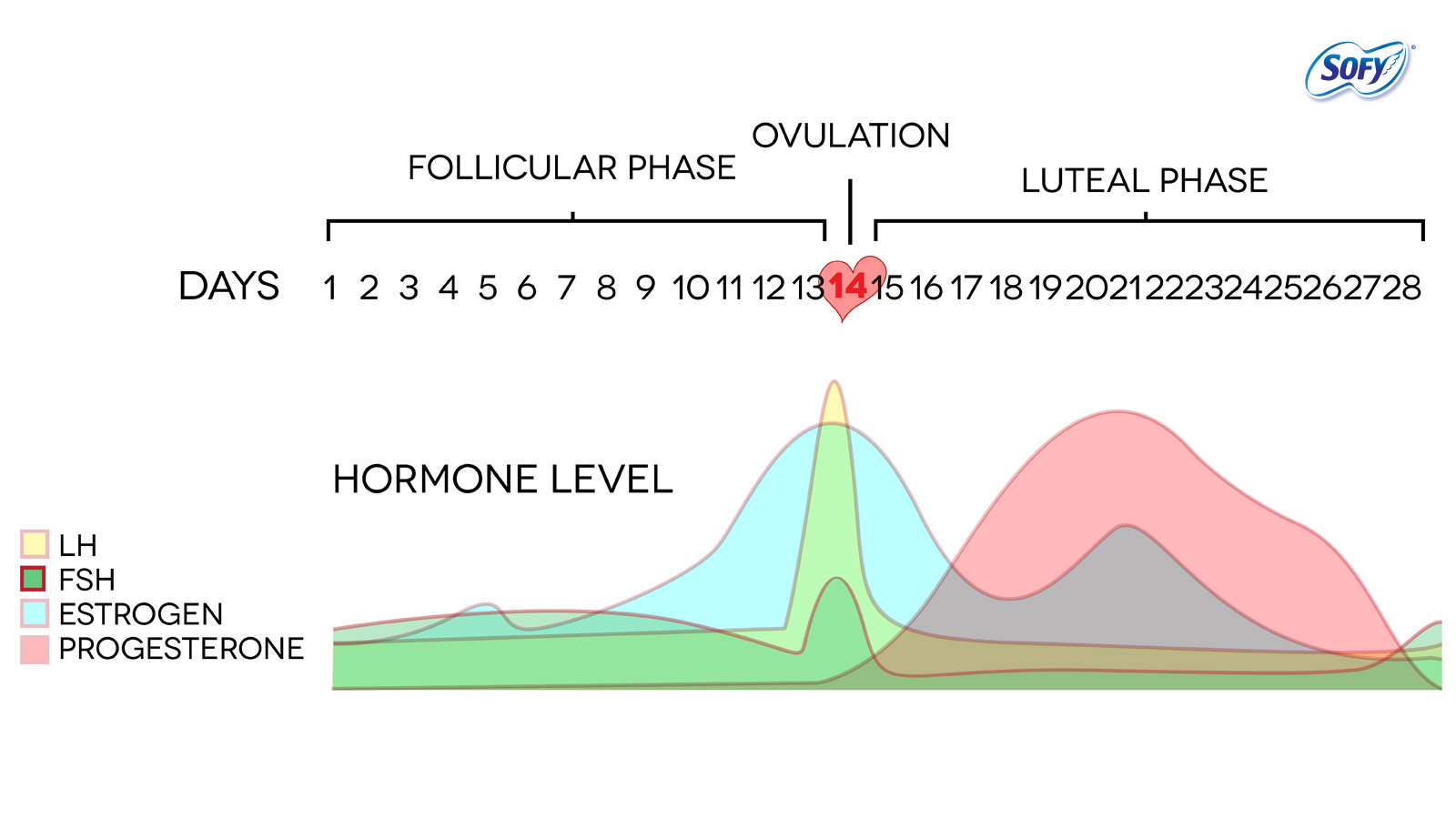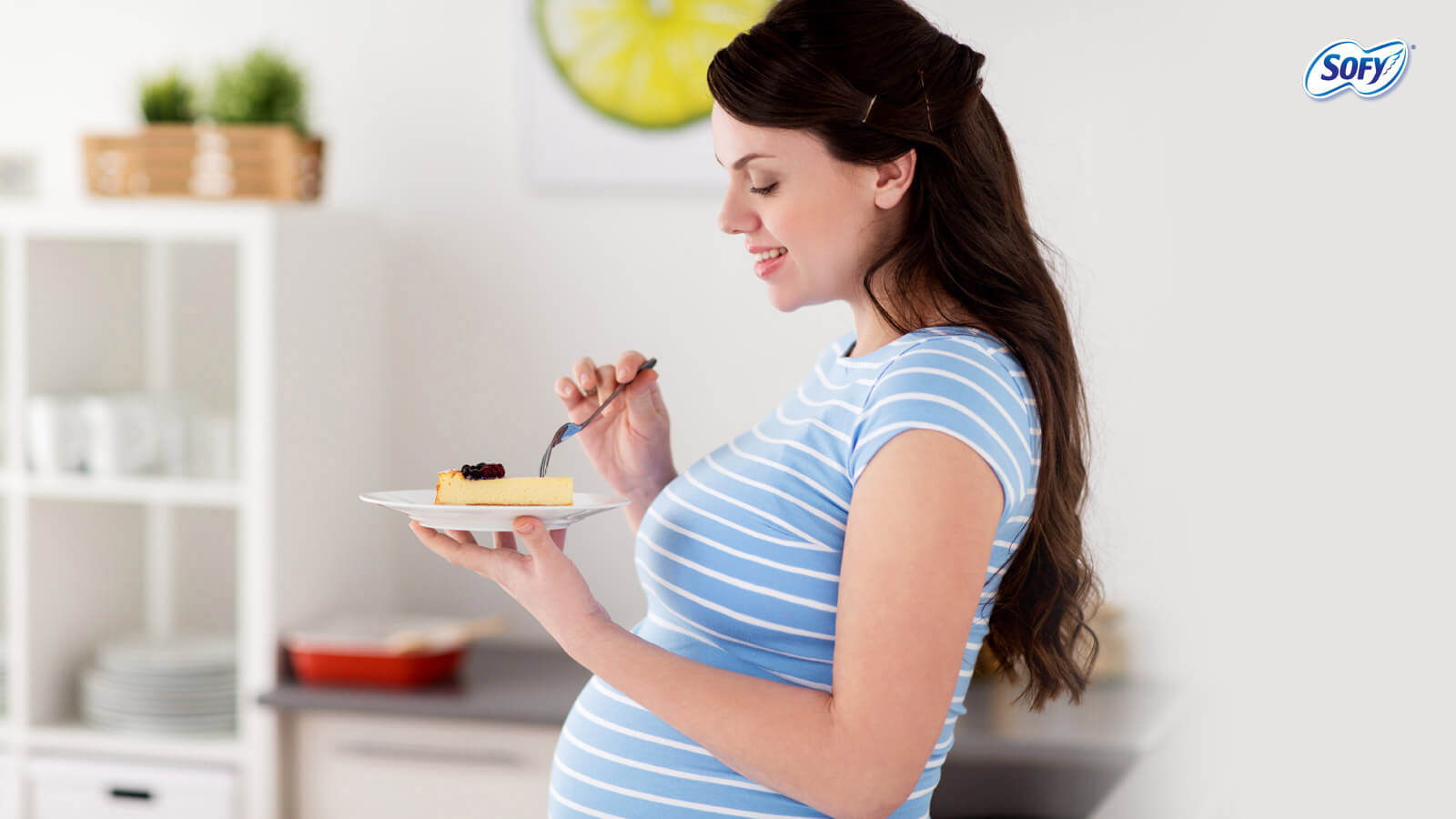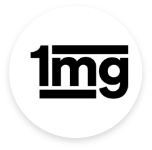Women have been entrusted with the responsibility of procreation. Once a girl reaches the reproductive age, which is generally around 12-45 years, every month her body prepares for pregnancy. An egg is released from the ovary to be fertilized by the man’s sperm. And the uterine lining thickens with blood and tissue to provide nutrients to the fertilized egg. If the egg doesn’t get fertilized and implanted to the uterus wall, the uterine lining is shed off to clear from the woman’s body. This is how you get your period.
Menstrual cycle refers to the time from day 1 of your menstrual period to the first day of your next period. The average length of this cycle is 28 days, but it can vary anywhere between 21-45 days. The hormones in the body move up and down to regulate this cycle. To understand the relationship between pregnancy and the menstrual cycle, we can divide the monthly cycle into 4 stages.
Menstruation
The menstrual cycle starts on the first day of your period. The levels of both the female hormones – estrogen and progesterone are low during this time. The uterine lining, i.e., blood and tissue are shed through the vaginal opening. Usually, periods last for 5 days (can vary from 3-7 days) and bleeding is heavy on the first two days. Due to low estrogen levels, you will feel tired and low during this phase.
Follicular Phase
After your periods, both the hormones begin to rise. However, estrogen increases at a much rapid rate. You feel energetic, great mood, low appetite, and glowing skin. The ovaries develop follicles in this stage. Each follicle has an egg. These follicles begin to grow, but soon one takes the lead. This follicle will mature. As the estrogen increases, uterine lining also thickens, it is getting ready to receive the fertilized egg. This phase lasts for around 12-13 days.
Ovulation
Around the 14th day, the mature follicle releases an egg -this is called ovulation. This egg travels through the fallopian tube to the uterus. A woman is most fertile around this time, the middle of her cycle. Estrogen level is at its peak during this phase and progesterone also is rising to help thicken the uterine lining further. You feel positive and confident, and your sex drive is high. When trying to get pregnant, you should plan intercourse around ovulation. This phase lasts for 24-48 hours. The mature follicle can be fertilized by man’s sperm, on its way from the fallopian tubes to the uterus. If fertilized, it will move to the uterus and implant to the uterine lining or endometrium which will nourish the embryo.

Luteal Phase
If the egg is not fertilized, it continues to travel and reaches the uterus.The remaining cells of the follicular lining in the ovary form the corpus luteum and this phase is called the luteal phase. This phase lasts from the 14th to 28th day of your cycle. Estrogen falls, but corpus luteum continues producing progesterone. Most women experience PMS symptoms like tiredness, cramps, bloating, cravings, breast tenderness,etc. The egg now dissolves, and both estrogen and progesterone fall. This causes shedding of the uterine lining or endometrium and you get your period. You begin with day 1 of your next cycle.
So this is it, simple right! Our extremely complex body works effortlessly month after month to maintain our menstrual health. Keeping a healthy lifestyle promotes feminine health and ensures a smooth pregnancy when the time comes for it. When trying to get pregnant, analysing your menstrual cycle can be really useful as it will help you figure out your ovulation time. This is the fertile window in your cycle when you can get pregnant.













